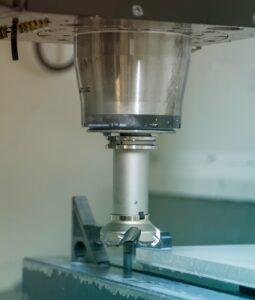 After the global shift to remote work in 2020, demand for home computers increased by over 10% worldwide. Tens of millions of computers are sold each year, and as a result, electronic components are in high demand by computer manufacturers.
After the global shift to remote work in 2020, demand for home computers increased by over 10% worldwide. Tens of millions of computers are sold each year, and as a result, electronic components are in high demand by computer manufacturers.
CNC machining for electronics is a huge industry, and electronic components require high precision. Not only do electronics require parts like semiconductors and circuit boards, but also electrical connectors.
With all the tiny parts required to manufacture electronics, CNC machining for electrical connectors and parts is essential. Read on to learn the three things you should know about electronic component machining!
What is CNC?
CNC, or computer numerical code, is a machining process run by a computer. A specialist programs the computer to move the machine in specific patterns.
This process is ideal for electronic component manufacturing because of the precise and delicate shapes needed. A good example is a heat sink, which has crosscut fins that must be exact to function properly.
The electrical connector machining process is automated with CNC, reducing manual labor. However, a human machinist still has to program and set up the machine.
CNC machining is possible for early any solid material, but the most common materials for electronics are steel, brass, aluminum, and ABS plastic.
Common Types of CNC Machining for Electronics
There are upwards of twelve types of CNC machining across manufacturing industries. However, in a machine shop for electronics industry parts, the three main types of CNC machining are milling, lathes, and Swiss turning.
CNC Milling
In CNC milling, the electrical component or connector is attached to the bed, which moves back, forward, and side to side. The cutting tool moves up and down, allowing a part to be cut using three axes: X, Y, and Z.
In addition to 3-axis milling, precision machine shops also use 5-axis milling, which allows for even tighter tolerances. For the small and intricately shaped parts used for electronics, 5-axis CNC milling is precise with very little error.
CNC Lathe
With a CNC lathe, the machined part fits into a chuck and rotates at high speed. The cutting tools then move around the part to shape it.
Lathes are ideal for longer cylindrical parts such as electrical connectors and allow for up to 9-axis cutting. If you’re prototyping an electrical component, the first stage of manufacturing will likely take place on a lathe.
CNC Swiss Turning
As with a lathe, a Swiss turning machine spins the part at high speeds. In addition to spinning the part, the machine moves it back and forth against a stationary cutting tool.
With Swiss turning, the part experiences less force from the tool. This type of CNC machining is most commonly used for micromachining.
Micromachining
Micromachining is exactly what it sounds like. It’s a similar process to machining electronic parts using a CNC machine, but on a much smaller scale.
Often, the cutting tools used for micromachining are as small as 0.015 inches, and the electronic parts machined can be as little as 0.008 inches in diameter. Most micromachining is done using a Swiss turning machine, which allows for extremely tight tolerances.
In addition to precision machines, a detailed design is crucial to micromachining electronic components.
Precision Machined Parts for Your Business
CNC machining for electronics is the best way to produce the parts needed for electronics manufacturing. Electrical connector machining is a largely automated process using mills, lathes, and Swiss turning.
Whether you’re producing thousands of components or one prototype, Salco Global is the electronic component machine shop for you. Contact us today to learn how we can help you with your electrical machining needs!
